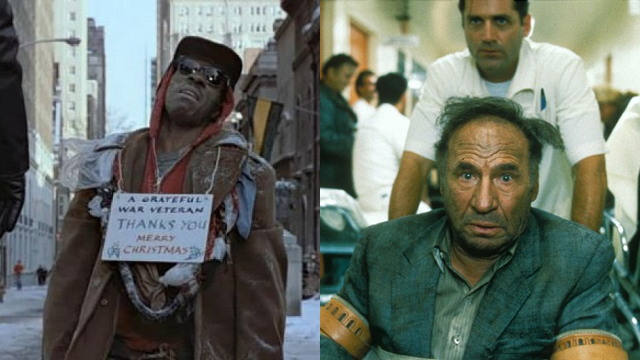John Landis’ 1983 film Trading Places arrived at the beginning of Reagan’s Reign, an era generally defined by its machismo, ego, and greed. Not that those attitudes ever stopped in certain sections of the country, but Hollywood perpetuated these attitudes by selling them through the pop culture. 1980’s Caddyshack conducted a war between the haves and the have nots, where the have nots were represented by a loud boisterous self-made millionaire who rejected the self-serious attitudes of old money and blatantly indulged in material excess. These attitudes continued through the 80s, including 1984’s libertarian fantasy Ghostbusters and 1986’s Ferris Bueller where Ferris’ everyman best friend Cameron has access to a 1961 Ferrari.
In hindsight, Trading Places is an oddity of the era. Most movies with people traveling on the economic ladder are either about people at the bottom overcoming some issue to work hard and climb it, or about people at the top succumbing to some sort of vice and crashing hard. Trading Places has neither of these. Dan Ackroyd is a guy relatively high on the ladder who becomes broke and homeless thanks to the whim of a pair of rich old white men. Eddie Murphy is a homeless shyster who magically finds his way to the top thanks to the whim of the same old white men. Trading Places replaces the belief that people are successful or failures because of hard work, but that its mostly pure dumb luck.
Trading Places is also set apart from other films of the era by having marginal empathy for people on both ends of the ladder. At the beginning of the movie, Murphy is just a hustler that Ackroyd capriciously throws in jail. But Trading Places sees this as an injustice, and the turn of fortune seems almost like poetic justice. When Murphy is placed into Ackroyd’s position, he seems as capable as Ackroyd was even though he was trained into it. And then there’s Jamie Lee Curtis’ prostitute, who is just as greedy and profitable as everybody else. Trading Places sees everybody as equal, but beneficiaries or victims of circumstance.
In 1991, Mel Brooks made his own version of the Trading Places formula, Life Stinks. Brooks stars as a rich real estate developer who regularly displaces impoverished and homeless people in favor of overpriced developments. While battling over a parcel of land, Brooks makes a bet with Jeffrey Tambor that he can’t survive for a month as a homeless person with no money, no phone, no credit cards, etc. Thus, Brooks is plunged straight into the very section of the population he regularly displaces.
Brooks uses comedy to work his way through thorny material, but Life Stinks waffles between humane empathy and condescension. In the old fashioned way, Brooks’s developer is a doofus who isn’t any better than the rest of the denizens on the street, but the way Brooks views the homeless citizens as stupid, crazy, or insane occasionally feels like he’s using them as props instead of pointing out the truism that mental hospitals are shutting down and addictions are an actual problem. One scene pits Brooks against a homeless guy in a Three Stooges-game of one-upmanship that leads to buffoonish violence…but it opens the question of whether Brooks is pointing out how crazy the bet is or using the craziness of the guy as the punchline. On the other hand, some scenes transcend his classic film set-ups. The titular scene at once makes the point that everybody is stuck in a miserable cycle and that the underfunded public medical system is broken with overworked and understaffed doctors and nurses.
Life Stinks is more focused on the community, while Trading Places is more focused on individuals. And yet the ending of Trading Places is far more radical than the ending of Life Stinks. The black street hustler, the female prostitute, and the recently destitute stock trader team up to take down the old system. Through a focused group effort, the new multi-cultural group are able to destroy the old system and install themselves as the new money. While the ending is radical, only three people benefited from the reform: Murphy, Ackroyd and Curtis. But, in Life Stinks, Brooks learns the lesson of humanity…and still remains a rich developer but now has a heart of gold. He dukes it out with Jeffrey Tambor using steam shovels, and then builds a community center for the homeless people; a one time gift symbolizing he has learned the lesson of his greed…except then he drives off in a limo with his homeless nickname “PEPTO” as a personalized license plate. He’s still greedy and insanely wealthy, but he’ll always remember his lessons…we assume.
Where Trading Places came at the beginning of Reagan’s 80s, Life Stinks came at the end of H.W. Bush during a mild economic recession caused by measures attempting to reduce inflation. At the time, corporations were engaging in belt tightening to maximize corporate profits. Income inequality was accelerating at the time, and unemployment was on the rise. Trading Places’ final upheaval had the echoes of the radical ’60s, but Life Stinks advocated for depending on trickle down economics and the benevolence of the moneyed class. Whether they intended their films to be political, the difference in messages is quite entertaining.

